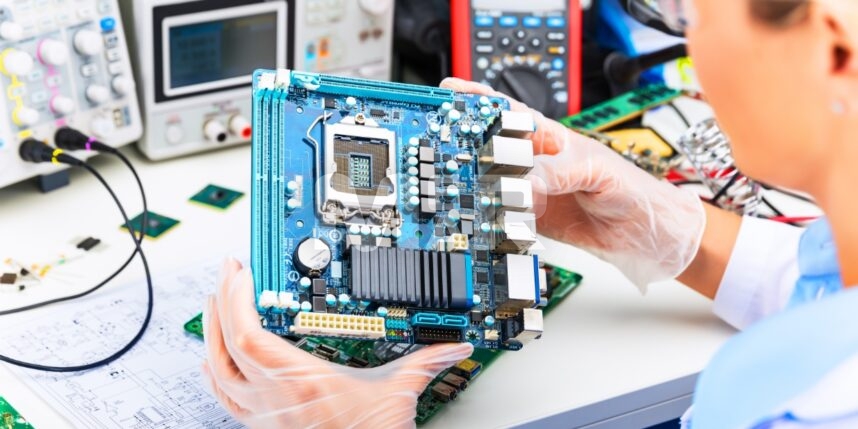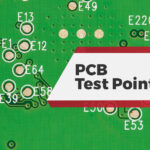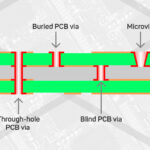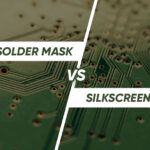Latest Trends in Medical Grade PCB Design and Manufacturing!

The medical industry has shown an unprecedented evolution in the development of medical devices. As the new diseases take birth, we need to brace up to the situation and upgrade the equipment to handle any sort of challenges. Very rightfully, PCB design and manufacturing companies have been tirelessly developing devices for testing novel diseases. New trends have emerged in building medical device electronics. Innovation & flexibility have become the standard principles of PCB design and manufacturing. PCB manufacturers have been quick to find ways to innovate and adapt to the changing landscape in the medical industry.
In this article, let us find the latest trends in medical PCB design and manufacturing and how your CM can best respond to the emerging trends in the medical industry.
Trends in Medical PCB Design
The medical industry is dynamic with several advancements happening in the market. Recent advances that are currently in the market include robotics, wearables, machine learning, and AI-based software, higher resolution computer vision, and more. One needs to keep up with the latest innovations and PCB design trends.
High-power boards, open & transparent communication and other factors are quickly reshaping the medical-grade printed circuit boards.
Some of the latest trends in the foreseeable future are listed below. Choose a CM that keeps up with these latest Medical PCB design trends.
-
Smaller the better
The printed circuit boards for medical device electronics are becoming smaller and denser. The component placement density has increased. This is reducing the margin of error on the boards facilitating the adaptability in PCB designs. Thin and lightweight PCBs help you in heat dissipation.
-
High power boards
There has been an increasing demand for high-power boards. It can accommodate more abundant components. Typically, higher voltage levels operate in the range of 24 to 48 volts. Thermal design should be optimized, and heat dissipation should be minimized for high-power boards.
-
Non-standard PCB Form-Factor Designs
With more health awareness among the people, many have been attentive to their body and mental health. They have been investing in self-monitoring health devices for exercise, wellness, and other medical conditions. This has led to non-standard Printed circuit board form PCB design factor.
-
High-density Interconnect (HDI) Boards
Smaller boards that provide higher functionality and tighter interconnectivity paths with very less area for traces. And for the same reason, many medical boards go for the deployment of HDI boards.
-
Flex Structures
Flexible electronics with special manufacturing needs have to be incorporated into the PCB designs and this has picked up momentum in recent years. These are excellent options since you have space, weight, and size limitations. These are also better-suited for high-temperature and high-density applications.
-
IoT Usage
IoT is everywhere. Device interconnectivity is much needed for improving medical systems. We need smart data transfer which would be made easier with the help of IoT. Hence designing PCB assemblies for IoT is now a much-needed necessity. IoT-ready PCBs should also meet rather stringent standards and regulations that govern their manufacturing.
-
Spread of COTS Components
There are commercial-off-the-shelf components (COTS) that help in speeding up and improving the design process. You can achieve a higher degree of reliability and efficiency with these. But make sure you receive PCB products from a reputable source.
PCB Manufacturing Trends in Medical Systems
We are currently living in a world that is undergoing a fourth industrial revolution where the physical and digital boundaries are blurred. The communication systems and software have to improve the manufacturing speed and efficiency. To ensure optimal medical-grade PCBs, we need to incorporate the latest manufacturing PCB trends.
-
PCB Design Intent
The best way to incorporate the design intent throughout your PCB build process is to collaborate with the right CM partner early on in the development.
-
Digital Twin Technology
Under PCB manufacturing, digital twin technology helps you to prevent waste and also mitigate development costs. You can identify any potential errors even before the first board is out in the market.
-
Optimize DFM and DFA Usage
Optimize your medical PCBA development to meet a high yield rate. Also, let your CM use DFA and DFM standards and guidelines.
-
Transparency
Maintain open and transparent communication with your CM from the beginning so that you can have seamless collaboration between your CM and you for your medical-grade PCBs.
-
Agile Manufacturing
PCB manufacture can incorporate PCB design changes iteratively with minimal production disruptions.
Challenges while designing Medical PCB devices
Several key standards and regulations have to be complied with and adhered to while designing medical electronic devices to ensure the safety of both medical professionals and patients.
- However, any major technological breakthrough takes years to see the light and make an impact in the market. This is because, while we make improvements in the product design, there would be longer intervals to get the distribution approvals as one needs to make sure that all the necessary safeguards are in place.
- Raw material supplies also dry up and it also becomes difficult to procure. Even customer demands change and reshape product design and development.
Summary
PCB design and manufacturing trends are likely to disrupt the current market trends and would show positive momentum in terms of design innovation, reliability, and performance. PCB industry as a whole is evolving but more specifically in the medical industry niche.
You can go for a certified and experienced CM for building high-quality and error-free PCB assemblies for medical systems. The CM should be able to meet the rigorous medical industry standards as they would be of utility where human lives are at stake.
Mer-Mar Electronics is a certified and leading PCB manufacturer that gets things done in lesser turnaround time. Our team works on medical-grade PCB development for delivering high-quality equipment with superior support. To help you get started, we furnish some information for DFM checks and you would be able to easily see and download DRC files. Get in touch with us to know more about our medical PCB design and manufacturing services.








